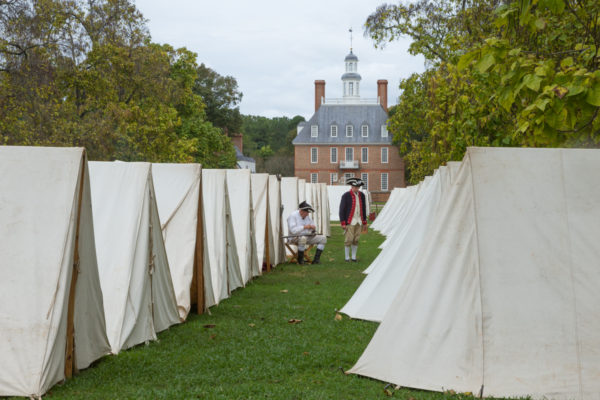
In September 1781, the Continental Army and French Allied forces turned Williamsburg into a sprawling military encampment as they planned the siege of nearby Yorktown, which would be the decisive battle that cemented American independence.
Those days of preparation will be honored and commemorated the weekend of October 8-9 when, as we like to call it, Washington’s Army Descends on Williamsburg.

It’s a unique opportunity to experience the city transformed, and to think about the fighting that coincided with the high-minded political debates about rights and annoying taxes.
There will be plenty of powder to spark the imagination. Hundreds of military reenactors from a dozen units will set up camp near Market Square, offering a sense of the scale of activity in the days spent preparing for battle.

The soldiers were not alone. You’ll see camp followers, the women and young people who supported the army with food preparation, laundry, and more. You can learn more about camp followers (“The Fairer Side of the Army”) in a 1 p.m. program offered each day at the Magazine. And a special walking tour telling the story of Williamsburg’s women leaves from Greenhow Lumber House at 10:30 a.m. each day.
Visit the military field hospital at the Governor’s Palace to learn about the tools and techniques used to treat the sick and wounded, and the grim realities of limited medical resources. Not to mention the scourge of smallpox, outbreaks of which took the lives of thousands during the Revolutionary War.
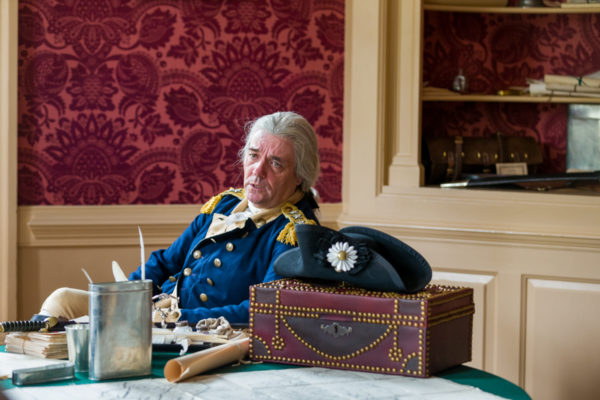
Last September George Wythe’s house on Palace Green was outfitted as General Washington’s military headquarters. (You can read about that here.) This year, the Peyton Randolph House has been turned into the headquarters of one of the more underappreciated heroes of the Revolution, Jean-Baptiste-Donatien de Vimeur, Comte de Rochambeau. It’s a mouthful.
From now until the end of the year, a tour of the Randolph House will include a discussion of the French visit, which lasted into 1782. The focus of the story there is on the lives of the enslaved members of the household. You’ll be impressed by how the story is even more complex and interesting when it covers Rochambeau’s time there.

Rochambeau was an experienced, 55-year old military commander when he landed—with some 5,500 troops—on American shores in Newport, Rhode Island in 1780. His opportunity to strike a crushing blow to the British came more than a year later. With Cornwallis’s British forces massed on the peninsula, Rochambeau moved swiftly to block his exit at Chesapeake Bay while Washington led the Continental Army over land to cut off the land route.
Washington, Rochambeau, and a significant cast of Patriot military leaders convened in Williamsburg in September 1781. Among them were the Marquis de Lafayette and American generals Henry Knox and Benjamin Lincoln. Also, a young colonel who would later become president, James Monroe. They’ll all be here.

For a brief primer on the situation in September 1781, catch Colonial Williamsburg historian Joe Beatty’s overview. It’s a good reminder that the people massed in Williamsburg had no idea how the Yorktown campaign would turn out, and certainly not that it would do so much to bring the war to an end. In that moment, there’s a lot of uncertainty.
Neither did the British. Joe says, “As Cornwallis sat in Yorktown pondering his next move—hoping desperately for some reinforcements or a chance to move out—he had no way of knowing that Continental regulars, humble militiamen, and their French allies were making ready in Williamsburg to seal his defeat. This was not in his wildest imaginings.”
The day kicks off with General Washington reading the general orders and the different regiments parade with their colors at the Courthouse.
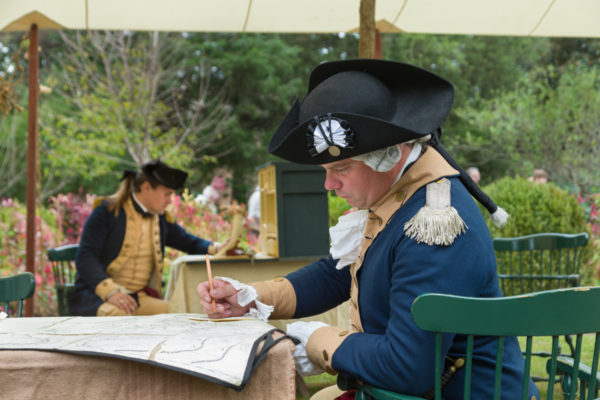
At 11, make your way to Washington’s headquarters at Wythe House. Visit inside to see how it would have looked with all the military accouterments, and join them in the backyard—if the guard lets you pass—to listen in on the planning.
Rochambeau was the architect of the successful October siege that effectively ended the war, with Cornwallis surrendering to the strains of “The World Turned Upside Down.” A French-Canadian interpreter, Emmanuel Nivon, will return to play the part of the Frenchman for the weekend, so this is a great chance to see a new face.
There’s plenty more to see and do-check out the slideshow below.
Fun for Kids
Our younger visitors can have a blast checking out all the tents, the cooking demonstrations, and the field hospital, but there are other opportunities as well.
Sat. 1 p.m. Music! The Fifes and Drums will march from the Capitol to Palace Green.
Sun. 12:30 p.m. There will be a military music demonstration at the circle in front of the Capitol.
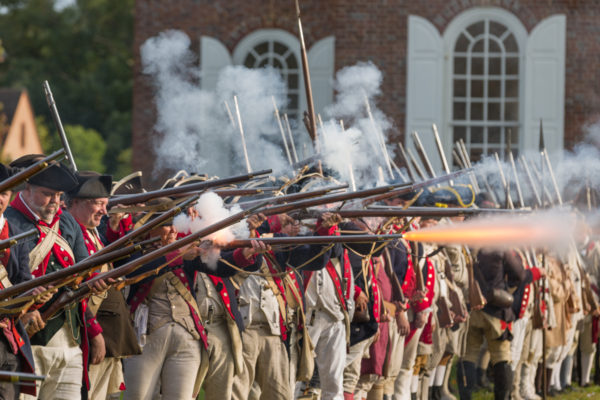
Sat. and Sun., 1:30 p.m. Want to put some extra boom in your weekend? Artillery demonstrations will be conducted at Market Square. Additional exercises will take place at the end of the weekend’s activities, with March to Victory! On Market Square behind the Courthouse Sun. at 5.
Sat. 2:30; Sun. 2 p.m. Play some 18th-century games at the Market Square Camp (After Your Chores Are Done!) Join a side for tug-of-war, learn quoits, play the game of graces, and more.
Sat. 12 noon; Sun. 3 p.m. Some hilarious puppeteering will be featured at the Play Booth Theater on the east side of Palace Green.
Sat. and Sun., 10:30 a.m.-1 p.m. Ox wagon rides leave every half hour for a spin—ok, a saunter—around Palace Green led by Duke and Diamond. Just a couple weeks ago we began offering rides in our new ox wagon. Purchase your tickets at the Visitor Center or the Lumber House.
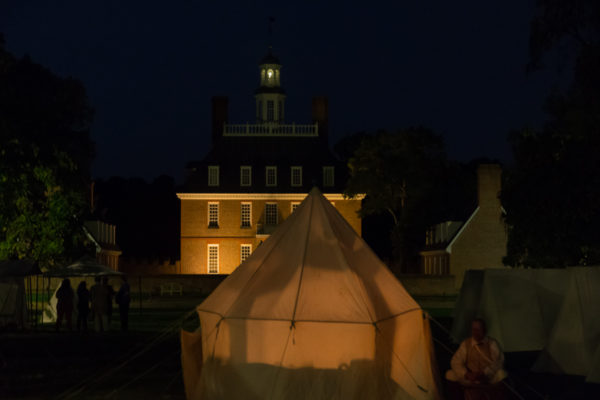
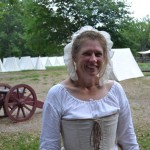
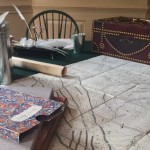
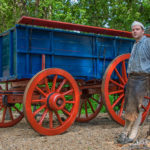
I thought I saw dates for Under the Redcoat but cannot find them here now.
Wondering if it’s still in the works…
You’re correct. We can’t confirm the program at this time. Sorry for any confusion.
All right, thank you!
Hoping that it does turn out!!!
Karen James says
I used to be a reenactor and was at Yorktown in 1981 for the big surrender. I was with Delancy’s Brigade, 2nd btln., camp follower.
I hope all of this activity from Wythe house to the rest of the revolution doings are being taped do that future programs dealing with Williamsburg history will be available to teachers and public whocwishvto view it. I know this makes Williamsburg all the more special to me.
FHow splendid! You are being a bit cruel to the re-enactors/ interpreters who’ll be portraying the Brits- red wool coats in Virginia’s July heat and humidity! They won’t just be “lobsterbacks”- they’ll be lobster faces.
Is “Under the Redcoat” shifting its interpretation to Commodore Sir George Collier’s raid in 1779 or did you mean 1781?
I meant 1781! Thanks for catching that-it’s corrected.
Bill